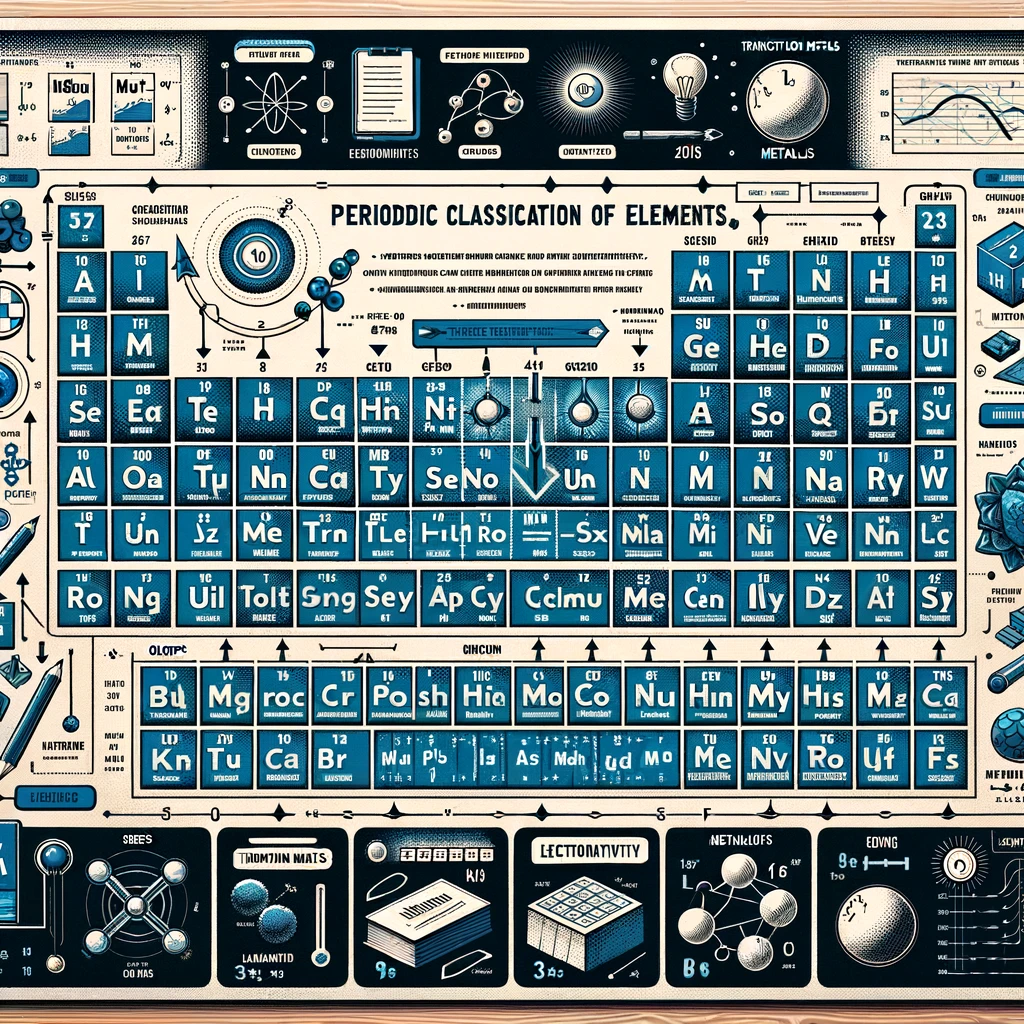
Periodic Classification of Elements: Unlocking the Patterns in Nature

Periodic Classification of Elements: Unlocking the Patterns in Nature
Introduction:
The periodic classification of elements is a systematic method of organizing the chemical elements based on their properties, atomic number, and electronic configuration. Dmitri Mendeleev’s initial periodic table has evolved into the modern periodic table we use today, which is a powerful tool for chemists to predict and explain the chemical behavior of elements.
Development of the Periodic Table:
- Dmitri Mendeleev: Introduced the first periodic table based on atomic mass, predicting the existence of several undiscovered elements.
- Henry Moseley: Revised the periodic table by arranging elements in order of increasing atomic number, leading to the modern periodic table.
The Modern Periodic Table:
- Organization: The modern periodic table is organized into 18 groups (columns) and 7 periods (rows), with elements grouped together based on similar chemical properties.
- Periodic Law: The properties of elements are a periodic function of their atomic numbers.
- Key Features: Metals, non-metals, and metalloids are separated based on their properties, with metals on the left, non-metals on the right, and metalloids forming a zig-zag line between them.
Groups and Periods:
- Groups: Elements in the same group have similar chemical properties and the same number of valence electrons, which influence their reactivity. For example, Group 1 elements (alkali metals) are highly reactive, especially with water.
- Periods: Elements in the same period have the same number of electron shells. Moving from left to right in a period, the atomic number increases, and elements become less metallic.
Transition Metals and Lanthanides/Actinides:
- Discuss the unique properties of transition metals, such as their ability to form colored compounds, and the placement of lanthanides and actinides at the bottom of the table.
Trends in the Periodic Table:
- Atomic Radius: Generally decreases from left to right across a period and increases down a group.
- Ionization Energy: The energy required to remove an electron from an atom. It increases across a period and decreases down a group.
- Electronegativity: A measure of an atom’s ability to attract electrons in a bond. It increases across a period and decreases down a group.
Applications and Significance:
- The periodic table is crucial in predicting the behavior of elements and compounds in chemical reactions. It aids in the synthesis of new materials and understanding the natural world.
Conclusion:
The periodic classification of elements is more than just a chart; it’s a comprehensive guide to understanding the building blocks of matter. Through its organized structure, scientists and students alike can predict the properties of elements and explore the vast possibilities of chemical reactions.